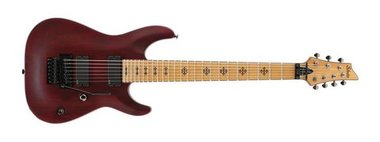The Quest: the metal heartland
 As I mentioned not long ago in my article about my next project, I'm striving for something new. The ingredients for my next album need to be fresh and unique, yet still completely aligned with my love of heavy, melodic music. Although I have recently become friends with a number of metalheads here in Bozeman, the common theme amongst them leans too heavily toward death metal and guttural vocals to be the right fit for me. I need the contributors for this next album to come naturally to melody; they must be forceful and graceful all at once. And, as I previously mentioned, the most sensible place to look for those musicians is where most of my favorite bands come from: Finland and Sweden.
As I mentioned not long ago in my article about my next project, I'm striving for something new. The ingredients for my next album need to be fresh and unique, yet still completely aligned with my love of heavy, melodic music. Although I have recently become friends with a number of metalheads here in Bozeman, the common theme amongst them leans too heavily toward death metal and guttural vocals to be the right fit for me. I need the contributors for this next album to come naturally to melody; they must be forceful and graceful all at once. And, as I previously mentioned, the most sensible place to look for those musicians is where most of my favorite bands come from: Finland and Sweden.
 The plane tickets are purchased, my family's summer has been scheduled. In mid-August we will embark on our quest, combining the goal of seeing Amaranthe perform in their home territory, with my own goal of making the first round of connections I need for the next album. Earlier this year we had hoped to accomplish the family goal, and see Amaranthe at the House of Metal festival. Nancy, Kiley and Zane are all crazy about Amaranthe, and we were immensely excited until we learned that the House of Metal show was not all ages; neither of the kids would make the 13 year old cutoff. Those were sad days in the Hearst-Reynolds house but they planted a seed that continued to grow. A few months later, while preparing my Amaranthe blog article, I was looking at their website and noticed a show planned for August at the Liseberg Stora Scenen. Being part of a family-oriented amusement park, I quickly contacted the park representatives and learned that, yes, there will not be an age limit. With that information, the quest became reality.
The plane tickets are purchased, my family's summer has been scheduled. In mid-August we will embark on our quest, combining the goal of seeing Amaranthe perform in their home territory, with my own goal of making the first round of connections I need for the next album. Earlier this year we had hoped to accomplish the family goal, and see Amaranthe at the House of Metal festival. Nancy, Kiley and Zane are all crazy about Amaranthe, and we were immensely excited until we learned that the House of Metal show was not all ages; neither of the kids would make the 13 year old cutoff. Those were sad days in the Hearst-Reynolds house but they planted a seed that continued to grow. A few months later, while preparing my Amaranthe blog article, I was looking at their website and noticed a show planned for August at the Liseberg Stora Scenen. Being part of a family-oriented amusement park, I quickly contacted the park representatives and learned that, yes, there will not be an age limit. With that information, the quest became reality.
 Centered around the Amaranthe concert, we will spend a week in Sweden and a week in Finland. I hope to make advance contact with various studios and engineers in Helsinki, Stockholm and Göteborg. I'm attempting to find someone that can act as a champion and coordinator for the project, someone that I will pay for their responsibilities but who will also immerse themselves in the vision. Ideally, this person will be able to assemble a collection of musicians, a drummer, a bass player, a keyboardist and a singer, that are perfectly suited to this project. Then, the coordinator/engineer/producer will help me establish the monetary and temporal logistics for the project. I hope to visit with various engineers and producers, and tour their facilities, so that we have enough opportunity to recognize the right fit when it shows itself.
Centered around the Amaranthe concert, we will spend a week in Sweden and a week in Finland. I hope to make advance contact with various studios and engineers in Helsinki, Stockholm and Göteborg. I'm attempting to find someone that can act as a champion and coordinator for the project, someone that I will pay for their responsibilities but who will also immerse themselves in the vision. Ideally, this person will be able to assemble a collection of musicians, a drummer, a bass player, a keyboardist and a singer, that are perfectly suited to this project. Then, the coordinator/engineer/producer will help me establish the monetary and temporal logistics for the project. I hope to visit with various engineers and producers, and tour their facilities, so that we have enough opportunity to recognize the right fit when it shows itself.
As a family, there will be more to this trip than architecting my next album. We will see the sights, experience the culture and, hopefully, spend some days outside the city, most likely exploring the Finnish wilderness. But, for me, the trip really hinges on my quest. I will strive to gather enough data to make the path to the next album clear. I will also endeavor to gain enough familiarity with the cities and their music scenes so that I'm prepared for a potential return trip. I suspect, budget-wise and time-wise, it will make sense for me to track guitars here in Bozeman, however, I do think that it makes sense for me to take part in as much of the other tracking as possible. Depending on scheduling, perhaps I can be present when basic tracks and vocals are being laid down.
We will see how it all comes together. If you are a heavy musician in Finland or Sweden and have an interest in the project, please contact me. If you are a recording engineer, producer or studio owner in Göteborg, Stockholm or Helsinki and think you could help me accomplish my vision, please let me know. I would be happy to communicate before and to meet with any and all of you in August. If the vision seems still a bit nebulous, you are right, I'm trying to leave a lot of room for it to define itself, based on the creative people involved. I firmly believe in the magic of collaboration and that "my" vision is really more of a catalyst than an exacting road map. For more information, clarification and questions, please do not be shy, I'd love to hear your thoughts.
 2 Comments → Posted on
2 Comments → Posted on  Monday, June 11, 2012 at 2:33PM
Monday, June 11, 2012 at 2:33PM  Amaranthe,
Amaranthe,  Finland,
Finland,  Finnish metal,
Finnish metal,  Göteborg,
Göteborg,  Helsinki,
Helsinki,  House of Metal,
House of Metal,  Liseberg Stora Scenen,
Liseberg Stora Scenen,  Stockholm,
Stockholm,  Sweden,
Sweden,  Swedish metal,
Swedish metal,  metal,
metal,  music | in
music | in  About,
About,  Concerts,
Concerts,  Music Industry
Music Industry 



